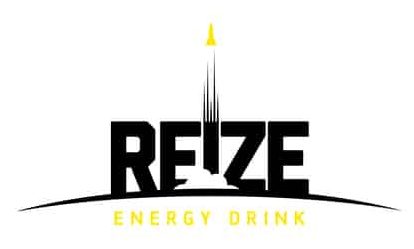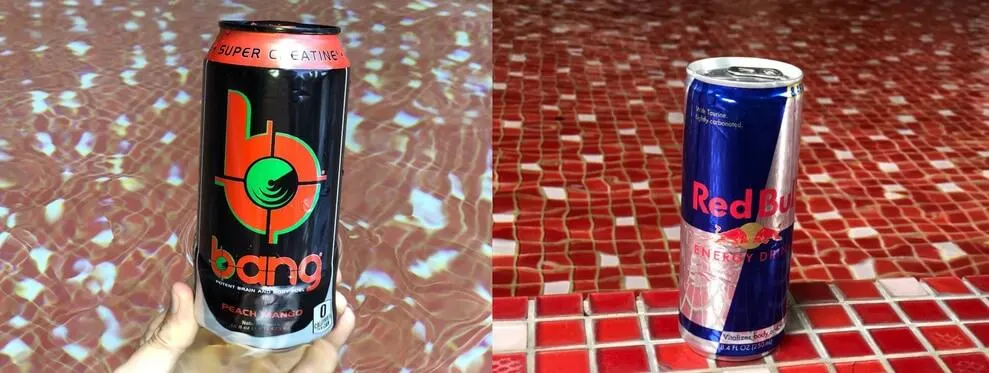Are you curious to know what the differences between Bang and Red Bull are?
If you are, you’ve come to the right place.
What is it that makes Bang and Red Bull energy drink distinct from one another?
If you’re looking for a short answer:
Bang and Red Bull significantly vary in major aspects. Bang has 300 mg of caffeine while Red Bull only has 80 mg. Bang is also sugar-free while Red Bull contains 29 grams of sugar. Finally, Bang has a proprietary ingredient called “Super Creatine,” making the drink more suitable for workouts.
But what do these differences mean and how do they fit into your lifestyle?
Let’s dig deeper.
Pitting these two popular energy drinks against each other, this article will explore what makes each energy drink different from the others and how each one would suit your needs.
Let’s get started…
What Is Bang Energy Drink?
Bang is an energy drink line from Vital Pharmaceuticals, a company located in Florida, US.
It is marketed with the slogan ‘Potent Brain and Body Fuel’, targeted at those who want to improve their physical and cognitive performance.
Bang Energy have a notorious reputation for its massive caffeine content and a long list of ingredients that are supposedly beneficial in boosting performance.
Bang Ingredients

A 16 fl. oz can of Bang Energy contains the following ingredients:
- 300mg caffeine
- 0 calories
- 0g total fat
- 0mg cholesterol
- 40mg sodium
- 85mg potassium
- 0g total carbohydrates
- 0g total sugars
- 0g protein
- Vitamin C (50% of the daily recommended amount)
- Vitamin B6 (25% of the daily recommended amount)
- Magnesium (2% of the daily recommended amount)
- Niacin (25% of the daily recommended amount)
- Vitamin B12 (25% of the daily recommended amount)
Bang also contains traces of:
- Carbonated Water
- Citric Acid Anhydrous
- Caffeine Anhydrous
- Sodium Benzoate (preservative)
- Potassium Sorbate (preservative)
- Potassium Citrate monohydrate
- Sucralose (artificial sweetener)
- Natural Flavors
- L-Leucine
- Potassium Phosphate Dibasic
- Vitamin C (ascorbic acid)
- Acesulfame Potassium (sweetener)
- Magnesium Chloride
- SUPER CREATINE (Creatyl-L-Leucine)
- L-Isoleucine
- L-valine
- Calcium Chloride
- Calcium Disodium EDTA
Bang’s ingredients list and health claims have been the focus of controversy.
For more on that, you might want to check out my other article where I share real laboratory test results showing the actual amount of various ingredients in Bang.
What Is Red Bull Energy Drink?
Famous for the trademark of two red bulls on its recognisable blue-and-silver can, Red Bull is well-known almost everywhere across the globe.
With the tag line, ‘Red Bull Gives You Wings’, the Red Bull energy drink line is not just associated with athletic and exercise performance, but also with daily activities that require mental energy like driving, working, and studying.
Red Bull Ingredients
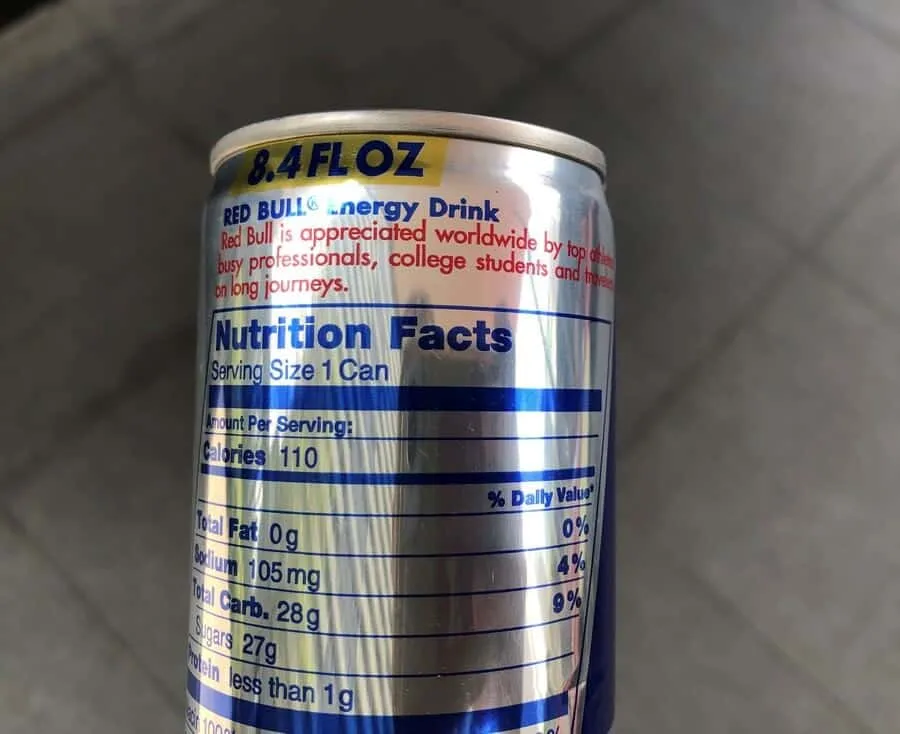
Each 8.4 fl. oz can of Red Bull contains these ingredients:
- 110 calories
- 28g carbohydrates
- 27g sugars
- 80mg of caffeine
- Niacin (100% of the recommended daily intake)
- Vitamin B6 (250% of the recommended daily intake)
- Vitamin B12 (80% of the recommended daily intake)
- Pantothenic Acid (50% of the recommended daily intake)
Red Bull also has trace amounts of:
- Carbonated Water
- Sucrose
- Glucose
- Citric Acid
- Taurine
- Sodium Bicarbonate
- Magnesium Carbonate
- Caffeine
- Niacinamide
- Calcium Pantothenate
- Pyridoxine HCl
- Vitamin B12
- Natural and artificial flavours
- Colours
What Are The Differences Between Bang And Red Bull?
One of the most noticeable differences is the can sizes of both brands. While Bang is typically sold in 16 fl. oz cans, Red Bull usually comes in 8.4fl oz cans.
Bang and Red Bull also have different amounts of caffeine and sugar, which I’ll cover separately below in a moment.
Both brands offer different flavours and may contain ingredients that aren’t available in the other.
In the section below, I’ll go deeper into the differences that Bang and Red Bull in terms of ingredients.
Bang Vs Red Bull – Ingredients
Caffeine
Bang contains a massive 300mg of caffeine anhydrous while Red Bull has only 80mg of regular caffeine per regular can.
First, let’s look at the types of caffeine both beverages have.
Regular caffeine is pretty straightforward – it’s naturally found and produced in certain plants.
Coffee, tea, and the majority of energy drinks contain this type of caffeine, and it’s responsible for providing you with energy boosts and increasing mental alertness.
Caffeine anhydrous on the other hand mainly comes from the leaves and seeds of coffee plants, which go through certain laboratory processes to have the water and other components filtered out of it.
The end product is a highly concentrated caffeine powder.
Though caffeine anhydrous is more concentrated than regular caffeine, both of them have similar benefits on sports performance and cognitive abilities.
In terms of caffeine content, Bang contains 300mg of caffeine, almost four times the amount of caffeine in a single can of Red Bull.
With its whopping amount of caffeine, Bang is noted to be one of the strongest energy drinks available on the market.
With that much caffeine, the energy boost you’ll get from Bang is more likely to last far longer compared to Red Bull.
However, Bang’s caffeine content comes dangerously close to the recommended daily upper limit of caffeine.
The FDA has a guideline on how much caffeine you should consume per day: 400mg for healthy adults, with not more than 200mg in one serving.
Exceeding the daily caffeine consumption can lead to unwanted health issues, such as:
- anxiety
- insomnia
- muscle breakdown
- digestive issues
- caffeine addiction
- high blood pressure
- fatigue
- rapid heart rate
- frequent urination and urgency
A bigger energy boost doesn’t equal better performance unless your body can take it.
With regard to your caffeine tolerance, I’d suggest dialling it down and going for other energy drinks with a more moderate caffeine content before guzzling down 300mg of caffeine in a Bang.
At least, consult your doctor or dietician (if you have a medical condition or are on meds) to see if it’s safe for you to drink Bang at all.
Personally, I prefer 50mg – 100mg of caffeine per serving to avoid getting overwhelmed by the side effects.
To minimise the risk of a caffeine overdose, I’d suggest consuming both Bang and Red Bull in moderation and always keeping your caffeine intake under the daily caffeine limit of 400mg.
Sugar
Red Bull contains 27g of sugar in each 8.4 fl. oz can while Bang is completely sugar-free and substitutes sugar with artificial sweeteners, namely acesulfame potassium and sucralose.
When it comes to sugar content, it’s obvious that Bang is the healthier energy drink of the two. After all, Bang has zero sugar and calories, which basically means no sugar crashes.
As for Red Bull, I find its sugar content to be quite concerning, especially if you’re a woman.
According to the AHA, women should limit their sugar intake to no more than 25g per day whereas men can have up to 36g of sugar daily. With 27g of sugar, a can of Red Bull contains more sugar than the total amount that women should consume in an entire day.
Too much sugar can lead to health problems like a sugar crash, weight gain, and diabetes.
Since Bang uses artificial sweeteners, Bang’s supply of energy will mostly come from its high caffeine content and you’re not likely to get the sugar rush you might get from Red Bull.
If you’re a fan of sugar-free energy drinks or simply prefer an energy drink with less sugar and fewer calories, Bang is probably the better choice for you.
Amino Acids
Bang contains EAAs (Essential Amino Acids) in every can, while Red Bull energy drink has taurine in each serving.
Bang contains a package of 9 Essential Amino Acids, which consist of BCAAs and 6 important amino acids (namely threonine, lysine, histidine, phenylalanine, methionine, and tryptophan).
I should mention here that I had these claims tested by an independent lab and what the lab found does not match up with Bang’s claims.
However, I digress…
Since EAAs are comprised of many amino acids, it’s bound to supply more benefits compared to taurine alone:
- boost exercise performance
- prevent muscle loss
- promote weight loss
- improve mood and sleep
Taurine, on the other hand, is usually added to energy drinks including Red Bull for its benefits in improving physical performance.
However, the specific quantities of both EAAs and taurine aren’t mentioned on the back of the can. They’re only listed among the ingredients that Bang and Red Bull have.
This makes it difficult to know whether either of these energy drinks contains enough amino acids to yield any increase in performance at all.
What Is Super Creatine In Bang?
Super Creatine is a copyrighted ingredient from VPX Sports and one of Bang’s main selling points. It was advertised as the ‘world’s only water-soluble creatine’ by the company, which later was claimed to be false advertising and eventually lead to a lawsuit with a rival company.
Creatine is popular as a sports supplement and is beneficial in enhancing athletic performance.
However, in the case of Bang, the exact quantity of Super Creatine isn’t stated on the can, thus it’s hard to be certain if there’s even enough to have any effects at all.
In addition to the lawsuit regarding the false advertising of Super Creatine, I’d say that this ingredient is more or less marketing fluff.
But hey, that’s just my opinion…
I’ve written a separate article covering how much creatine is in a can of Bang that you can read here. I cover things in a lot of detail.
Bang Vs Red Bull – Flavours
Bang has a total of 24 flavours in its lineup, while Red Bull is available in 19 flavours.
Bang Flavours
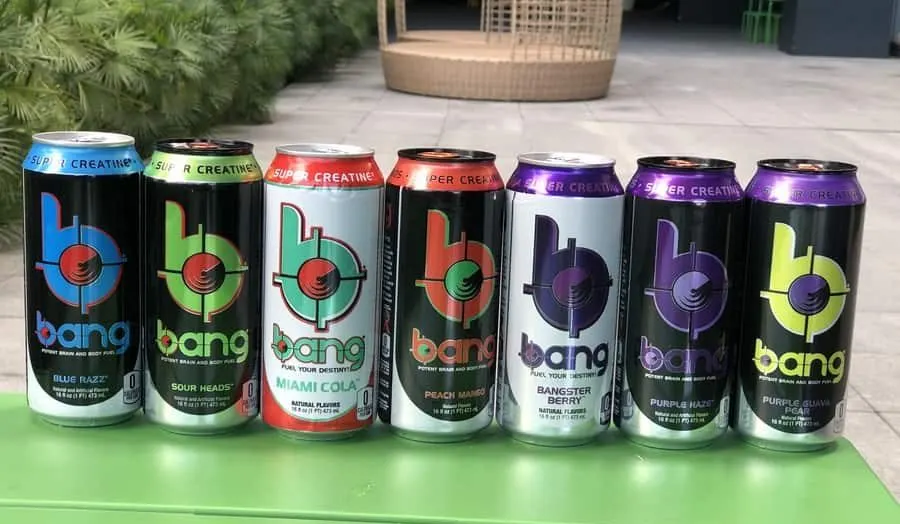
Both Bang and Red Bull have almost the same number of flavours, with Bang having a few more. Bang does have a slightly wider selection compared to Red Bull.
- Black Cherry Vanilla
- Blue Razz®
- Champagne
- Candy Apple Crisp
- Cherry Blade Lemonade
- Citrus Twist
- Cotton Candy
- Lemon Drop
- Bangster Berry
- Frose Rose
- Key Lime Pie
- Rainbow Unicorn
- Peach Mango
- Pina Colada
- Power Punch
- Purple Guava Pear
- Purple Haze
- Root Beer
- Radical Skadattle
- Rainbow Unicorn
- Sour Heads
- Star Blast®
- Birthday Cake Bash
- Miami Cola
Red Bull Flavours
- Original (amber)
- Sugar-free (reduced calories)
- Total Zero (no calories)
- Red (cranberry)
- Ruby/Red (grapefruit)
- Blue (blueberry)
- Yellow/Tropical (tropical fruit)
- Orange/Mandarin (mandarin/orange)
- Green/Kiwi (kiwi-apple)
- White/Coconut (coconut berry/acai)
- Peach (peach-nectarine)
- Pear Sugar-Free (pear)
- Lime Sugar-Free (lime)
- Purple/Acai Sugar-Free (açai)
- Purple/Acai (acai berry)
- Lime (lime-lemon)
- Orange Sugar-free (orange)
- Yellow/Tropical Sugar-free (tropical)
- Winter Edition (plum-cinnamon)
Price Difference between Bang and Red Bull
Based on the prices listed on Amazon, the average cost of a 12-pack of 16 fl. oz cans of Bang Energy is around $39, whereas a 12-pack of 8.4 fl. oz cans of Red Bull is priced at around $24.
With a little calculation, that means that one can of Bang is around $3 and Red Bull costs about $2 for a can.
Take note that these prices exclude shipping fees and waiting time.
Bang is definitely the more expensive of the two, although the extra fluid volume does make up for it. But if you’re trying to save cash, Red Bull might be the wiser choice.
As for the price of Bang, it’s pretty justifiable since it has more ingredients than Red Bull and might have more benefits, depending on how you see it.
But, it’s really your personal choice which brand you choose.
Does Bang Or Red Bull Give You More Energy?
If we’re going by logic, then Bang is the energy drink that will give you more energy but it also depends on your body.
When put side-by-side with Red Bull with regards to ingredients, Bang clearly wins considering it has a higher caffeine content and more beneficial ingredients.
Plus, Bang comes in a bigger can.
Nonetheless, just because an energy drink has more caffeine, which would guarantee a more powerful energy boost, it doesn’t mean that’ll work for you as it could backfire and instead cause unpleasant side effects like dizziness, diarrhea, and vomiting.
If you know you can’t tolerate a large amount of caffeine well, you should opt for energy drinks with a more moderate caffeine content that better suits your tolerance.
I’ve covered everything you need to know about whether you can drink Red Bull or Bang every day in these previous articles.
Is Bang Or Red Bull Better?
| Per 16 fl. oz can/ per 8.4 fl. oz can | Bang | Red Bull |
| Calories | 0 calories | 110 calories |
| Caffeine Content | 300mg | 80mg |
| Sugar Content | 0g | 27g |
| Amino Acids | EAAs | Taurine |
| Approximate Price | $3 | $2 |
| Flavors | 24 | 19 |
In my opinion, it boils down to how you view each of these energy drinks, and what benefits you expect from them. Though Red Bull is cheaper, Bang offers a stronger caffeine dose and a more extensive selection.
Ultimately, both Bang and Red Bull energy drinks can increase your energy levels and maintain your alertness for hours before the effects wear off.
Both Bang and Red Bull also suit different caffeine tolerances.
Bang is great if you have a higher tolerance to caffeine, while Red Bull is more suited if you prefer a lighter drink.
If you don’t mind less fancy ingredients in your energy drinks, you won’t go wrong with Red Bull with its more affordable deal.
Just be sure to keep in mind that you should consume them in moderation whichever you choose.
Bang/Red Bull Energy Drink Alternatives
If you’re looking for other energy drinks that are similar to Red Bull or Bang, here are some great options to choose from:
If you’re thinking about broadening your energy drink options to powdered energy drinks, have a look at these:
- Gfuel
- Zipfizz
- Advocare Spark
- REIZE energy drink (my fav)
REIZE Energy Drink (10 out of 10)
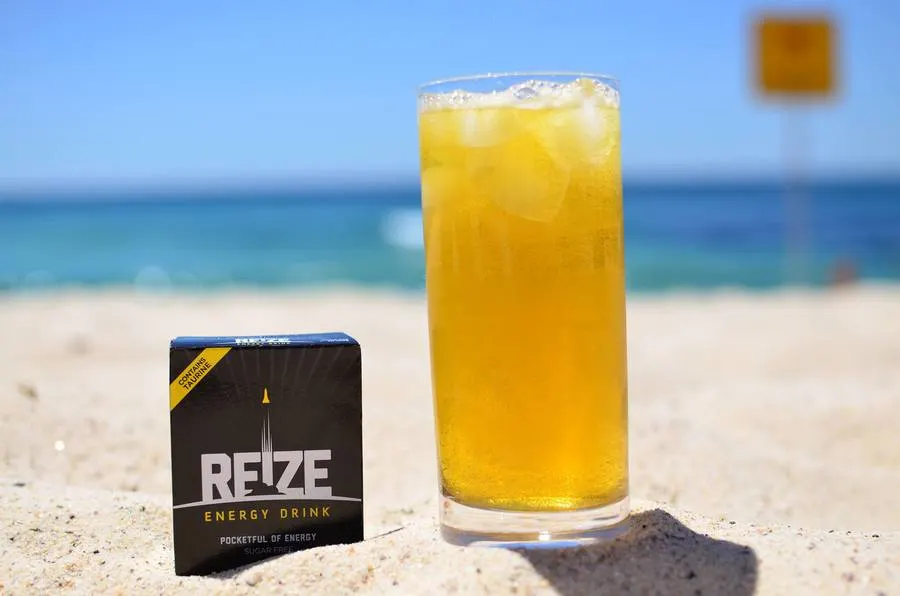
In my opinion, REIZE is better than Bang and Red Bull in many ways.
REIZE is a powdered energy drink that comes in convenient sachets that you can carry around anywhere.
REIZE also has a sensible 50mg of caffeine and is completely sugar-free.
REIZE has only 11 calories and contains nutritious ingredients like ginseng, taurine, and B vitamins that blend together to provide you with the perfect energy boost without any subsequent crash.
Best of all, you can get REIZE at only around $1 per drink, which includes shipping straight to your door.
That’s an incredible value for money and a more affordable option compared to either Bang or Red Bull.
Give REIZE a try today and you might agree with me that REIZE is the smarter choice
Related Articles:
Have other questions about Red Bull?
I’ve put together this epic Red Bull resource directory where you’ll find everything you could ever want to know about Red Bull energy drinks.
